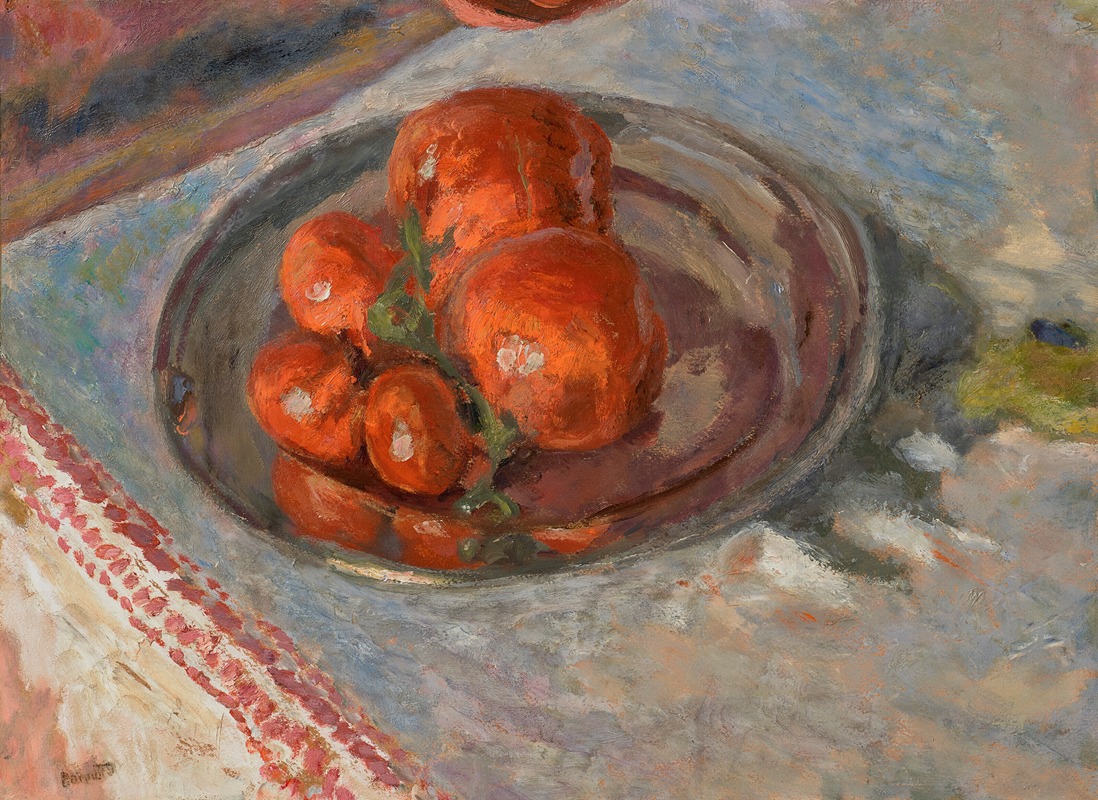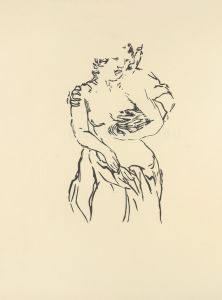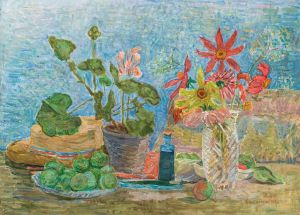
Tomates
A hand-painted replica of Pierre Bonnard’s masterpiece Tomates, meticulously crafted by professional artists to capture the true essence of the original. Each piece is created with museum-quality canvas and rare mineral pigments, carefully painted by experienced artists with delicate brushstrokes and rich, layered colors to perfectly recreate the texture of the original artwork. Unlike machine-printed reproductions, this hand-painted version brings the painting to life, infused with the artist’s emotions and skill in every stroke. Whether for personal collection or home decoration, it instantly elevates the artistic atmosphere of any space.
Pierre Bonnard (1867–1947) was a French painter and a founding member of the Post-Impressionist group Les Nabis. Known for his use of vibrant color and intimate domestic scenes, Bonnard's works often depict everyday life with a sense of warmth and subtle emotion. Among his many paintings, Tomates (translated as Tomatoes) is a lesser-known piece that reflects his characteristic style and thematic focus.
Tomates is a still-life painting that showcases Bonnard's interest in capturing the beauty of ordinary objects. The artwork features a composition of tomatoes, arranged in a way that emphasizes their natural form and color. Bonnard's use of rich, warm tones and his attention to light and texture bring a sense of vitality to the subject. The painting exemplifies his ability to transform simple, mundane items into works of art that evoke a deeper appreciation for the everyday.
Bonnard often worked from memory, relying on sketches and his observations to recreate scenes in his studio. This approach allowed him to infuse his paintings with a dreamlike quality, as seen in Tomates. The loose brushwork and layered colors in the painting are hallmarks of his technique, creating a sense of movement and life within the stillness of the composition.
While specific details about the creation of Tomates are scarce, it is consistent with Bonnard's broader body of work, which frequently includes still lifes, interiors, and landscapes. His paintings often reflect his personal surroundings and experiences, offering a glimpse into his private world. Bonnard's focus on the interplay of color and light, as well as his ability to capture the essence of his subjects, has earned him recognition as one of the most important artists of the 20th century.
Today, Tomates is appreciated as an example of Bonnard's mastery of color and composition. It serves as a testament to his ability to find beauty in simplicity and to elevate everyday objects into the realm of fine art. The painting continues to be studied and admired for its artistic qualities and its place within the context of Bonnard's career and the Post-Impressionist movement.


















